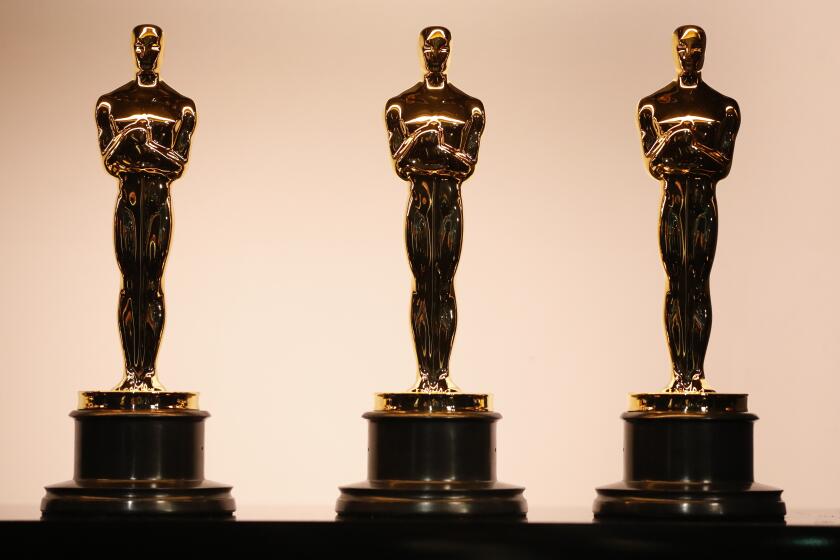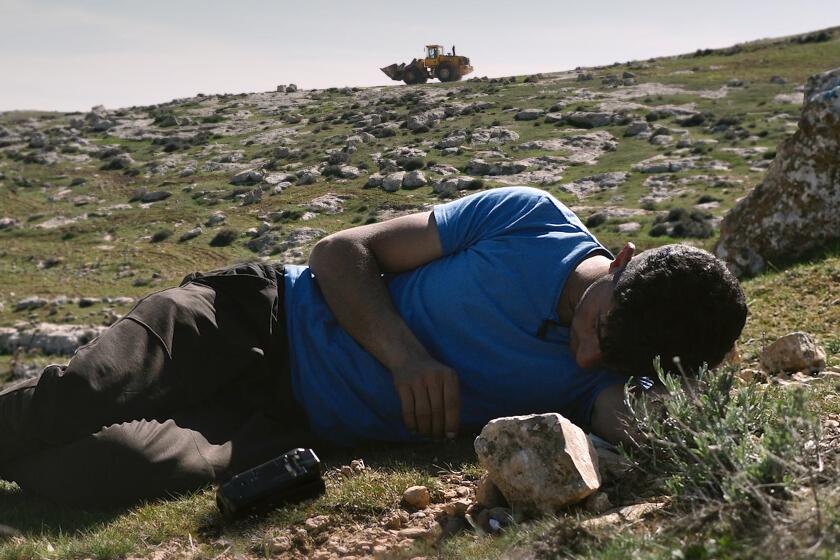Cover Story: A whole life out there
- Share via
“Toy Story 2” had the perfect ending. Woody accepts the idea that his beloved boy owner Andy will grow up someday, but “it will be fun while it lasts.” Besides, he tells pal Buzz, when it ends, the toys will have each other.
So, when John Lasseter, who directed the first two “Toy Story” movies and now runs Pixar and Disney Animation, gathered his creative team to the same remote Tomales Bay cabin north of San Francisco to hash out ideas for the third “Toy Story” movie, he started with one basic question: How do you reopen a story that resolved itself so beautifully?
The first day, no answers came, even after the crew — which included such Pixar stars as Andrew Stanton (“Finding Nemo,” “Wall-E”) and Pete Docter (“Monsters, Inc.,” “Up”) — cracked open the custom-crafted bottle of “Toy Story” wine that Lasseter had given Stanton a decade earlier.
Then the floodgates opened, says Lee Unkrich, the Pixar vet who’d go on to direct “Toy Story 3.”
“We came to realize that there’s a lot of stuff we know is going to happen in life,” Unkrich says over a lunch with his Pixar producing partner Darla Anderson. “I know I’m going to send my three kids off to college someday. I know my parents will pass away someday. It’s one thing to say, ‘I’ll be able to deal with that day when it comes,’ and it’s another thing to find yourself at that day, dealing with it.”
Pixar’s creative team came up with a lot of other ideas that weekend. (Spoilers ahead if you’re one of the three people who hasn’t seen the movie.) Andy would now be grown and going off to college. The toys would land at a day care center, a seemingly benign place that would turn out to be a prison ruled by a Teddy Ruxpin knockoff. The great tradition found in prison-break movies would be played with and tweaked. And, in the closing minutes, Andy would leave and give the toys to another child.
And, in those closing moments — a scene that proved so adept at opening the tear ducts of viewers that Unkrich and company had to scramble and craft a closing-credits epilogue to give moviegoers a chance to compose themselves — Pixar fashioned another perfect ending.
Because, despite what Woody said at the end of “Toy Story 2,” we see that, all these years later, he’s still so attached to Andy that he can’t see the writing on the wall. The other toys know Andy isn’t going to play with them again, but Woody’s almost delusional in his devotion.
“I love that by the end of the film, not only does Woody learn to let go of Andy and see that one of the most loving things you can do sometimes is let somebody go, but also his feelings from the beginning of the movie are completely vindicated,” Unkirch says. “Andy plays with them again. We created this safe environment where Andy can do that, even though he’s 17 years old. We kind of got our cake and ate it too.”
All the movie-theater stories about audiences openly weeping came as something of a surprise, Anderson says. They were trying to make an emotional film, yes, and later Unkrich made the tonal connection with a waterworks classic from his own adolescence, “E.T.” But there was never any formulated, four-hankie plan for the film.
Yet, Unkrich, screenwriter Michael Arndt and the rest of the creative team never backed away from raw truths, either. When the toys find themselves on a conveyor belt heading into a landfill incinerator, it would have been easy, Unkrich says, to have Mr. Potato Head crack a joke or to have inserted a series of silly sight gags as the toys tried to scurry to safety. Instead, they clasp hands, look into each others’ eyes and face their demise with a quiet grace and dignity.
“When I talked to my animators about it, I thought, ‘If I were on an airplane with my family and something happened and we were in an emergency, what would I do?’” Unkrich remembers. “Would we be screaming our heads off? I don’t think so. I think we’d get very quiet and we’d gather as a family and I’d hold my children and face what was about to happen.”
“Toy Story 3” grossed more than $1 billion worldwide. Artistically, it fulfilled Unkrich’s goal of having the three “Toy” movies fit together and feel like Pixar had conceived them as a trilogy some 15 years ago.
But like Woody, Unkrich (and, he says, everyone else at Pixar) knows a lot of stuff is going to happen in life. And one of those things is, someday, Pixar will make a movie that people don’t like.
“We know it’s going to happen,” Unkrich says. “We know it’s completely crazy that we’ve gone on for this long. Is someone going to screw it up at some point? Odds are, yes.” He pauses. “Well, probably.”
And, in that moment of hesitation, you can tell that, like Woody, Unkrich has a few illusions himself.
We wouldn’t want it any other way.
More to Read
Only good movies
Get the Indie Focus newsletter, Mark Olsen's weekly guide to the world of cinema.
You may occasionally receive promotional content from the Los Angeles Times.











